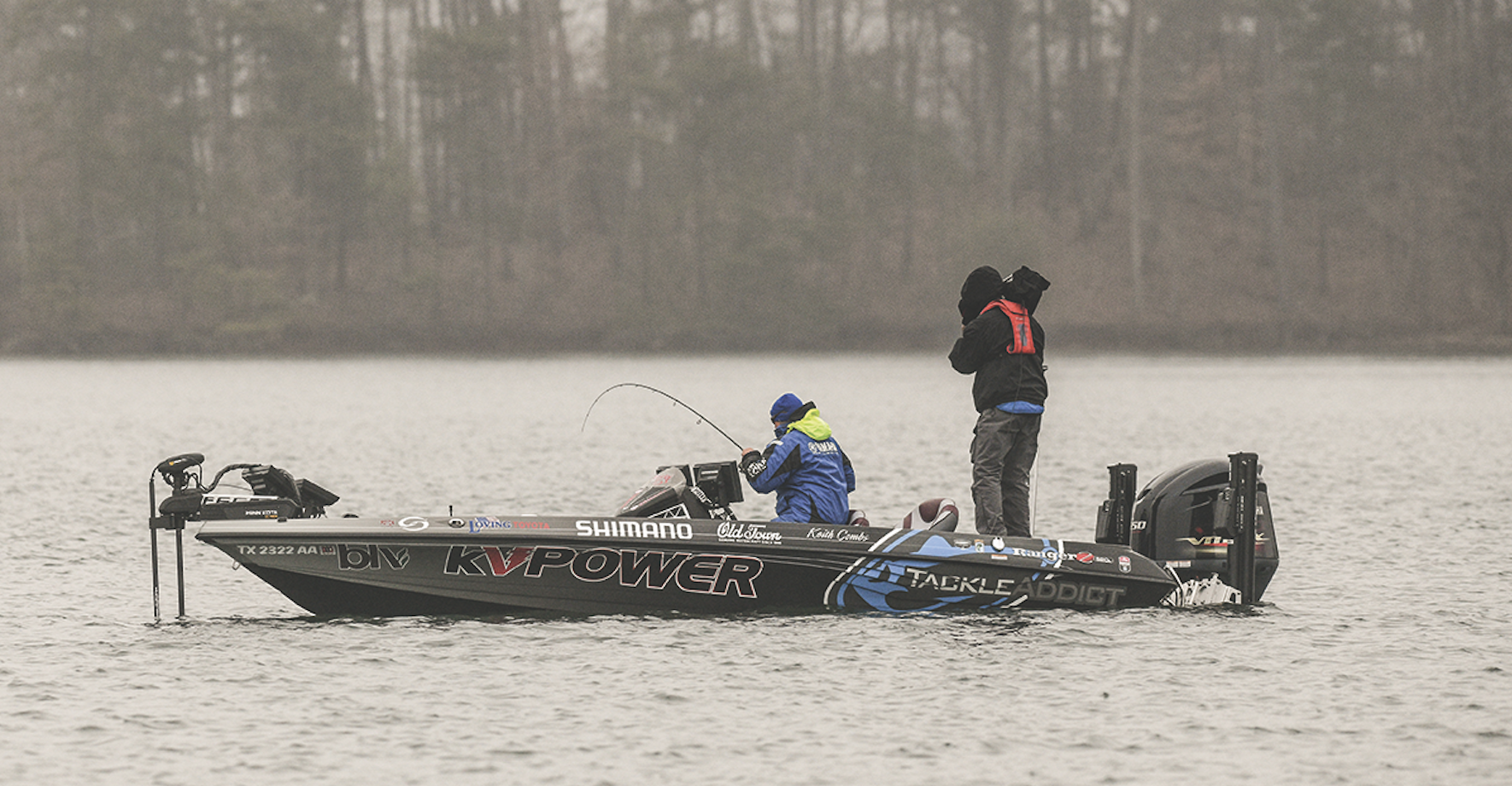
Well before Keith Combs became a Bassmaster Elite Series pro, he stumbled onto a novel jig-fishing ploy that consistently puts bonus bass in his livewell. The fortuitous event took place about 15 years ago while Combs was fishing a team tournament in north Texas on Cedar Creek Lake.
His partner was Landon Ware, a good friend he had grown up fishing with. They were pitching black and blue 3/8-ounce jigs dressed with a soft-plastic chunk to boat docks. They let their jigs sink to bottom and hopped them out from under the docks as they had always done. Then they quickly reeled the jigs in to make the next pitch.
“That day several bass swiped at our jigs and missed them just as we were pulling them out of the water,” Combs said. “We started reeling our jigs back slower and caught a bunch of bass doing that. It’s been a habit of mine ever since.”
This happened long before jig swimming became a mainstream bass tactic. Although Combs’ jig ploy is technically a swimming presentation, it differs considerably from the way today’s anglers cast and retrieve a swimming jig high in the water column.
After Combs casts or pitches a jig, his hop-crawl-swim gambit begins with a typical bottom presentation. After he hops or crawls the jig out of what he perceives to be the strike zone, he reels the bait back slowly enough to keep it swimming just above the bottom. It takes discipline to maintain such a plodding retrieve under the intense pressure of tournament competition. “People get caught up quickly reeling a jig right in,” Combs said. “When I catch myself doing that, I remind myself of how many bass I’ve caught by slowing down.”





